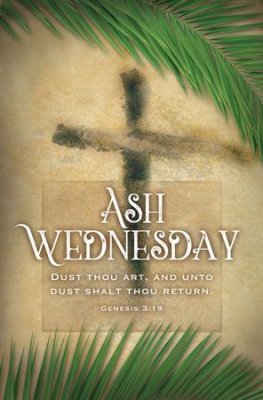
Ash Wednesday marks the beginning of a 40 day period of prayer and fasting or abstinence. Ash Wednesday derives its name from the practice of placing ashes on the foreheads of adherents as a celebration and reminder of human mortality, and as a sign of mourning and repentance to God. Ash Wednesday is a day of repentance and it marks the beginning of Lent. Ashes were used in ancient times, according to the Bible, to express mourning. Dusting oneself with ashes was the penitent’s way of expressing sorrow for sins and faults.
This was bad news for Adam, and it is bad news for us. Like Adam, we have come from dust, and to dust we will return. Throughout our lives, our dusty bodies remind us of our mortality, when they get sick, or when they work imperfectly, or when they age, or when they stop working altogether.
Often, our bodies are the instruments of sin, rather than of God-honoring work and worship. Of course, many good things come from our bodies, including new human life, fulfilling work, loving embraces, and acts of charity. The inherent goodness of our bodies has not been obliterated by sin, though it has been tarnished and twisted.
So Ash Wednesday begins with bad news. It invites us into a time of extended contemplation and contrition, as we consider during Lent just how much we need One to save us from our sin. Ash Wednesday also signifies hope. The ashes that are imposed on our heads form the shape of a cross. Sometimes these crosses are obvious; sometimes more subtle, but the very stuff that symbolizes our mortality and sin also alludes to that which will set us free. It reminds us that God has entered into our human condition in order to break the power of sin and welcome us into the fullness of His life. It is not a day to focus on the cross so much as a time to begin to realize just how much we need the cross.
May what we fast from during Lent be minor in comparison to what God can help us add to improve our relationship with Him.